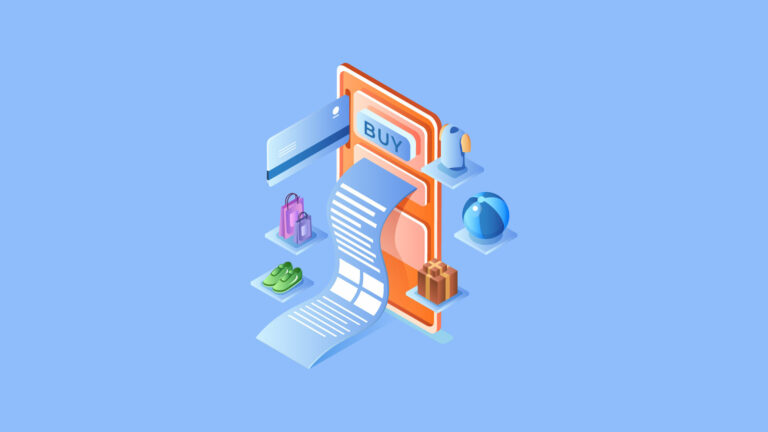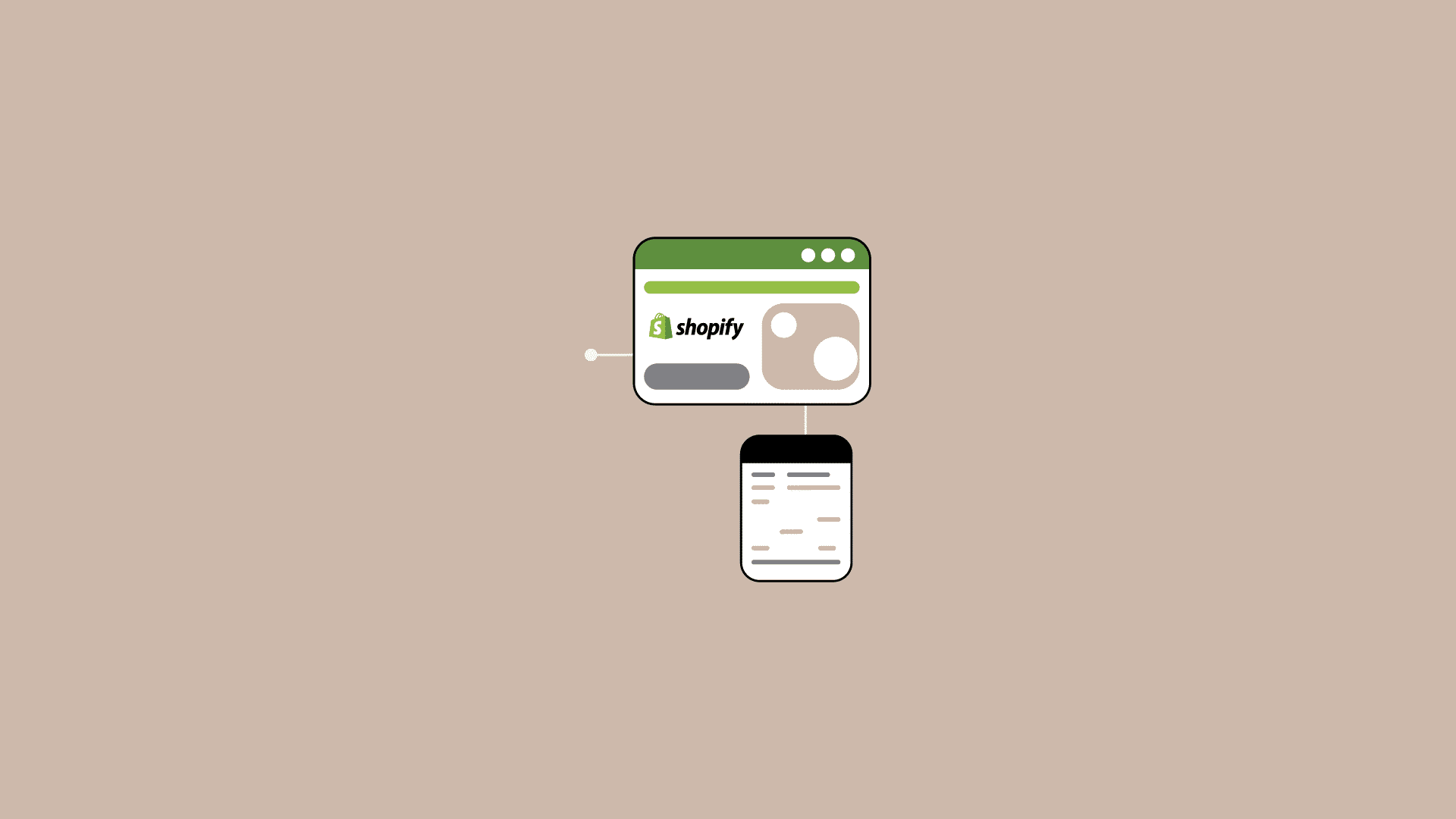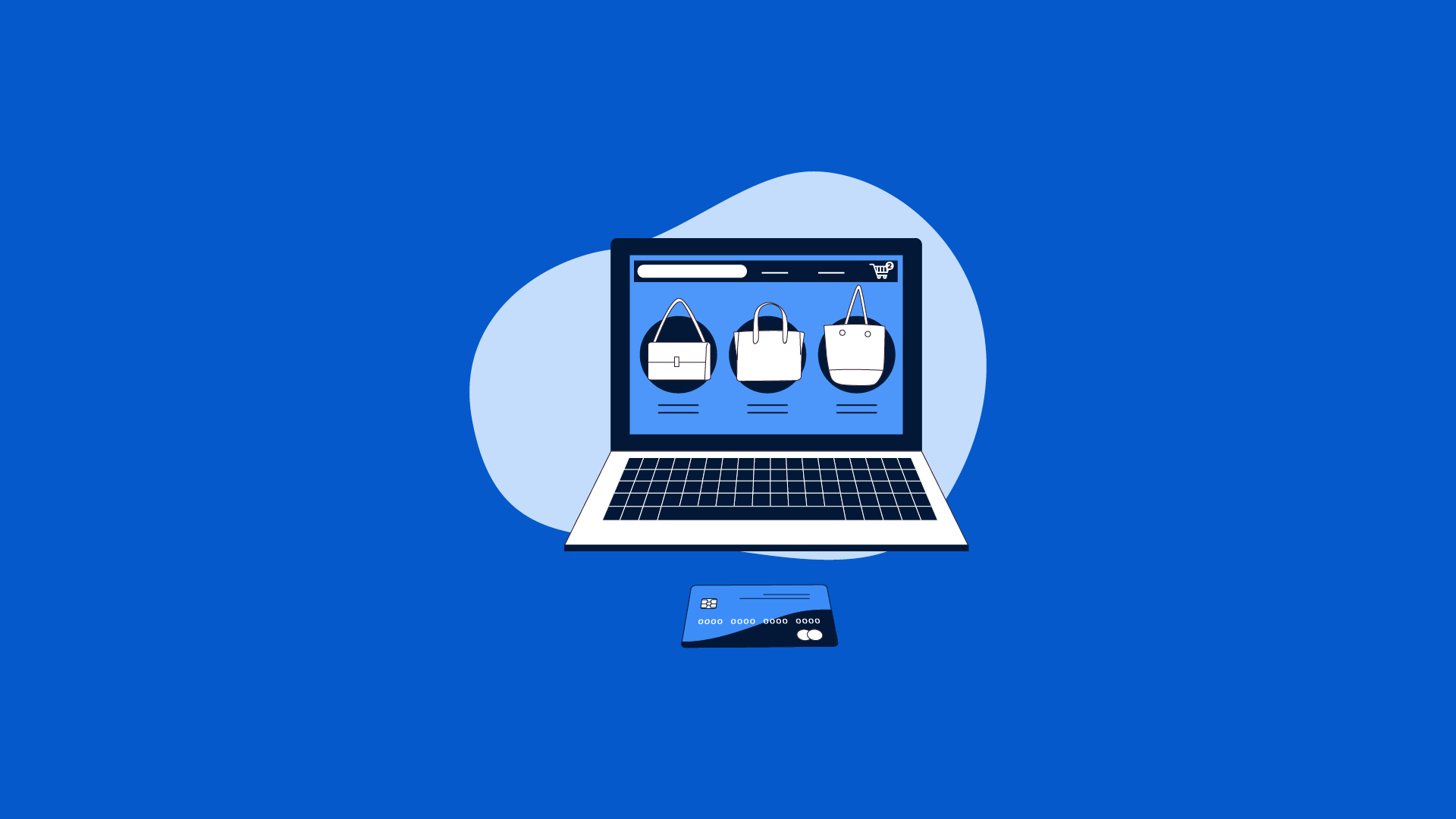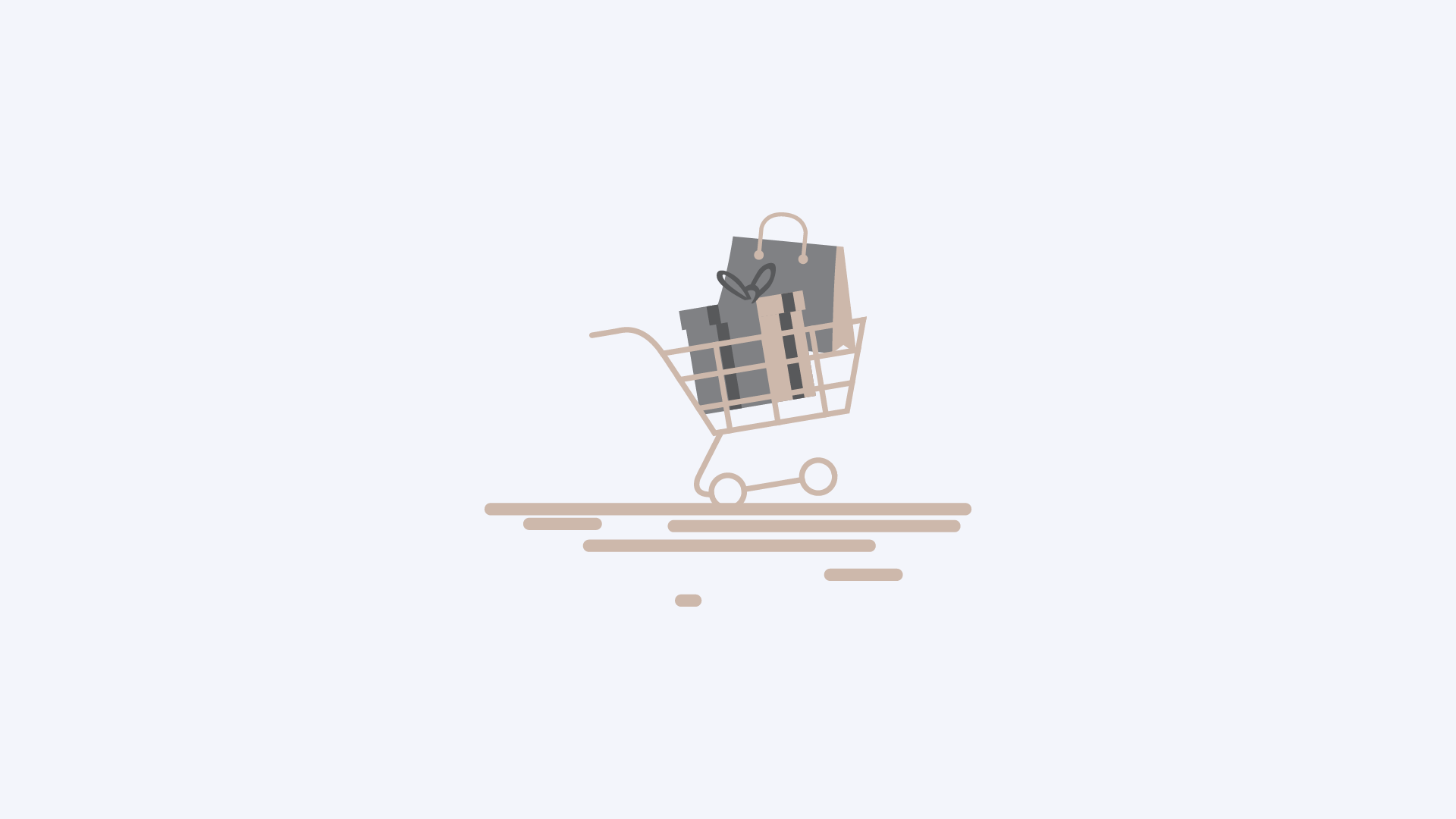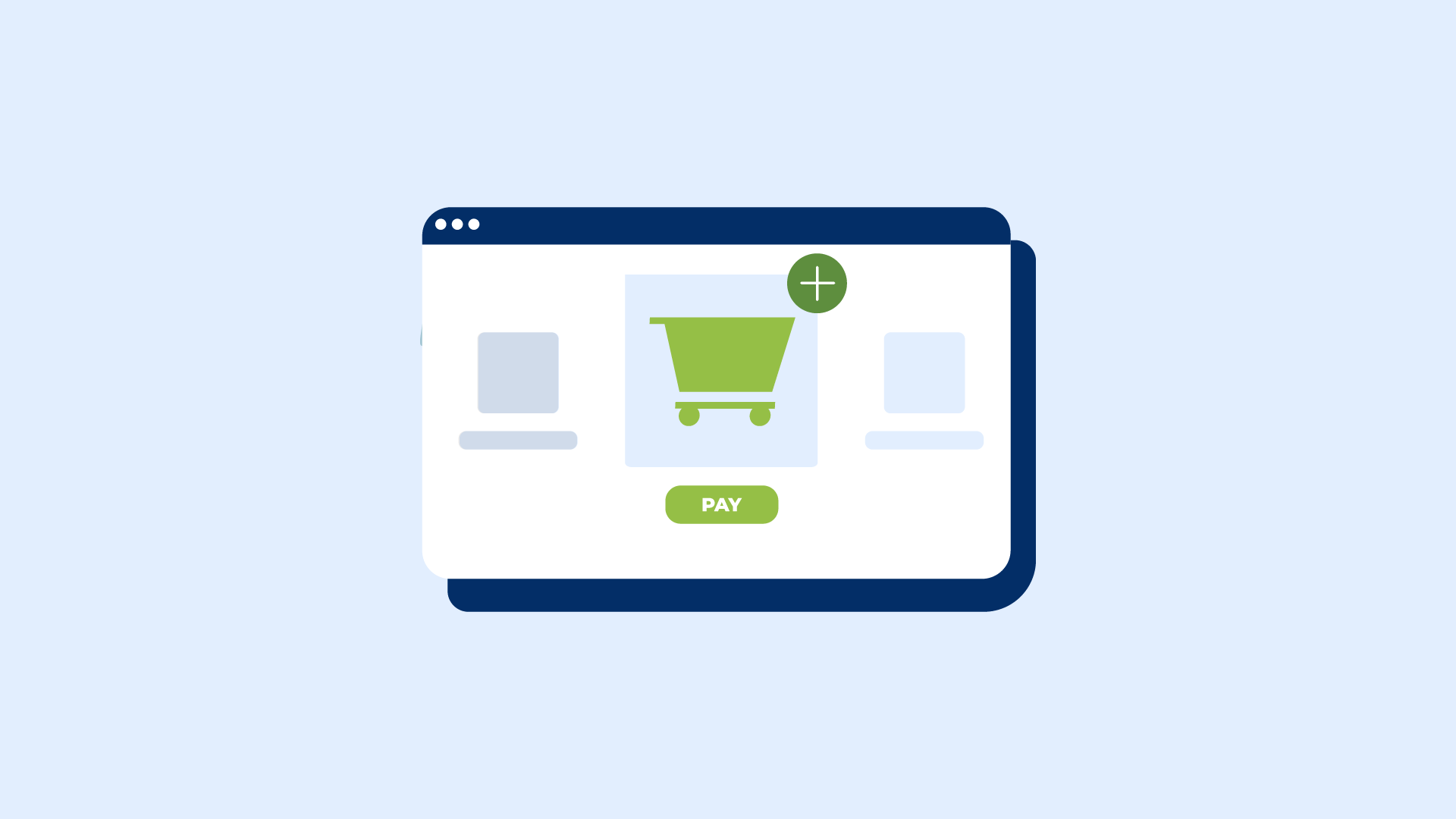There are many different types of e-commerce solutions available in the market today. Each platform comes with its own set of features and advantages. This article will discuss some of the most popular e-commerce platforms you can use for your online business.
Online shopping has become a common practice today. There are various ways to shop online, from buying goods at big department stores to ordering food or clothes through websites.
Ecommerce is one of the fastest-growing industries, accounting for $1 trillion in sales in 2021. While eCommerce is becoming an integral part of our lives, many consumers still aren’t aware of its benefits.
With the rise of mobile apps, many businesses are shifting their focus toward eCommerce. This shift is primarily due to the ease of access offered by smartphones and tablets. In addition to being convenient, eCommerce provides better customer service and lower costs than other channels.
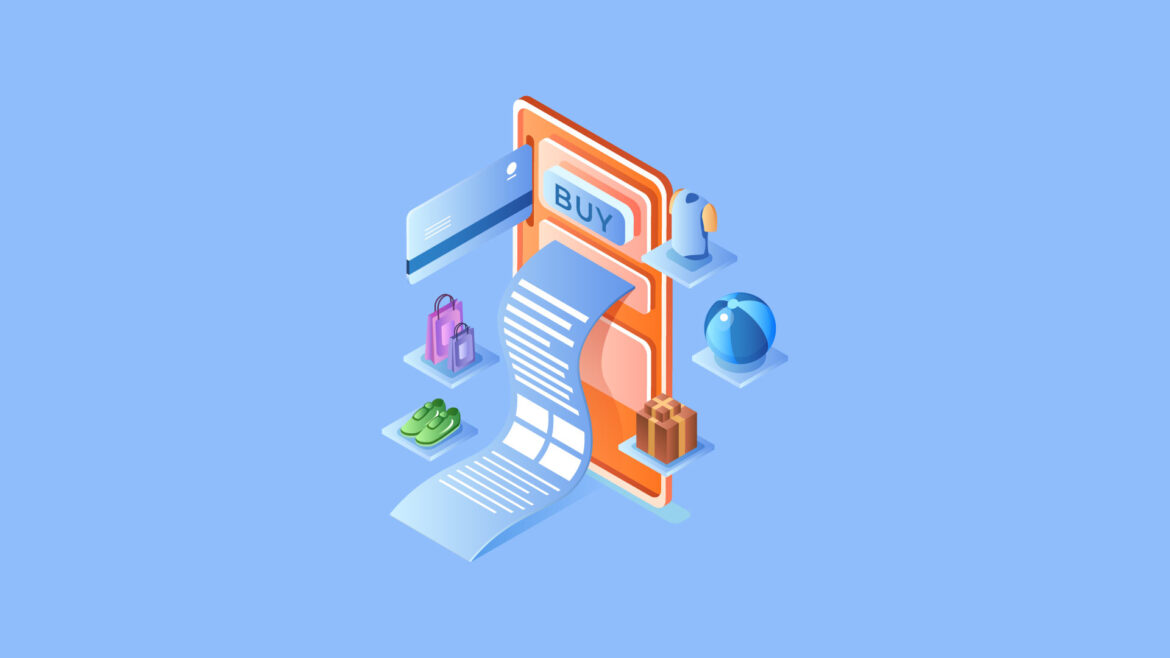
What is Ecommerce?
Ecommerce is an online retail business model that allows customers to purchase products or services over the Internet.
What is Ecommerce?
Ecommerce is the buying and selling of goods and services using digital technology. It can also mean any type of commercial transaction over the Internet. For example, you could sell your house online. Or you could buy something online like an airline ticket. You could even buy a product online and pick it up at a store.
E-commerce started as a simple idea. A customer could purchase products directly from a company online. Today, e-commerce is a $4.9 trillion industry. E-commerce companies sell everything from electronics to clothing to books.
Ecommerce has become an essential part of our lives. We shop, buy groceries, get our health care, and even pay our taxes online. Ecommerce has changed how we interact with each other and the world around us.
The History of Ecommerce
Ecommerce started in 1979 when Michael Aldrich connected his TV to a computer using his phone line. His idea sparked the idea of online shopping. At the time, few people owned computers. Bill Gates and Steve Jobs popularized computers for everyone. Bill Gates even said his goal was to put “a computer on every desk” and in every home. Without computers, ecommerce wouldn’t be what it is today.
In 1994, Jeff Bezos founded what would later become Amazon.com. He started the company out of his garage and sold it to the public in 1997. At first, he sold books but expanded to other items like electronics, toys, and clothing.
Over time, Amazon grew to become the largest online retailer in the world. In 2015, Amazon had ecommerce sales of $107 billion, making them the second-largest company in the United States behind Apple ($234.98 billion) and Alphabet ($74.89 billion). Amazon also holds the number two spot for market capitalization at $1.114 trillion.
In the early 2000s, websites like Amazon and eBay made it easier to sell products online. These sites allowed anyone to create an online storefront and start selling goods. However, there were still many barriers to entry.
For example, you needed a website, a credit card processor, payment processing software, inventory management software, shipping software, etc. You also needed to hire someone to help you manage this stuff. All of this made starting an online store costly and time-consuming.
Anyone can set up an eCommerce website today and see solid results within six months.
Types of Ecommerce Business Models
Ecommerce models are a way to classify different transactions that occur within the digital space. Four main ecommerce models describe almost every kind of trade between consumers and businesses.
Each one has its pros and cons. Which model works best depends on your goals and how much money you have available to invest.
Here’s a brief overview of each type of ecommerce business model:
Business-to-Consumer
The B2C model is the most common ecommerce model that involves a business selling products or services directly to consumers. The most significant advantage of this model is that it allows companies to reach a large audience with relatively little investment. On the downside, it requires more customer interaction which means lower conversion rates.
Consumer-to-Consumer
The C2C model is similar to B2C except that it involves a person buying from another person instead of a business. For example, if you wanted to buy a book from your friend, you would be engaging in a C2C transaction.
This model has the lowest barrier to entry because both parties only need access to a computer and the internet. The disadvantage of this model is that there is no built-in infrastructure to support the transaction. If something goes wrong during the process, there’s nothing to fall back on.
Business-to-Business
The B2B model is when a business sells its products or services to other companies. These businesses include wholesale distribution, manufacturing, consulting, and so on.
The B2B model is great for larger companies who want to cut down on overhead costs. They may use this model to get around regulations restricting direct consumer sales.
An example might be a manufacturer who wants to sell its products to a distributor. Another example could be a retailer who wants to sell its products to other retailers.
The benefit of this model is that companies have more control over how they market their products and services. They also can create custom solutions for customers. However, this model usually requires a more significant upfront investment.
Consumer-to-Business
C2B is similar to C2C. This model involves one party buying from another party. But in this case, the buyer is not a consumer but a business. For example, a company that needs help marketing its products might hire a consultant to do some work. Or an artist sells or licenses their artwork for use by a company.
The benefit of this e-commerce model comes from businesses leveraging existing relationships to increase sales.
Types of Ecommerce Revenue Business Models
Ecommerce is an umbrella term for any business selling products or services online. There are many different kinds of e-commerce businesses, each with its unique characteristics. Some are focused on selling physical goods, while others sell digital downloads.
Some focus on one product category, while others offer a broad range of items. Some are run by individuals, while others are large corporations. Each type of e-commerce business has its advantages and disadvantages.
Here are seven of the most commonly encountered types of e-commerce businesses:
Dropshipping
Dropshipping is a form of ecommerce in which you sell items through another company’s website. You don’t need to worry about inventory management, customer service, or shipping logistics.
All you need to do is create listings for your products and wait for customers to buy them. If you’re interested in starting a dropshipping business, check out our ultimate guide to dropshipping guide.
Dropshipping is an easy way to start selling online. However, there are many downsides to the method. You will not have complete control over the product or service you’re offering. If customers are unhappy with the quality of the item or shipping experience, you won’t be able to get out of it.
Dropshipping is also competitive because there are a lot of other businesses offering similar services. Finding unique ways to stand out may be challenging.
If you’re looking to start an online store, you’ll need to consider what product you plan to sell. If you’re selling physical products like clothes or electronics, you’ll need a warehouse to store them. You’ll also need to register with the relevant authorities and pay taxes.
Dropshipping doesn’t require any of these steps. All you need is a reliable supplier and a website. Since you’ve got both, you can start selling your goods.
Subscription Businesses
Subscription businesses sell products that customers have a recurring need for, like toiletries and groceries. These subscriptions are also “on-demand” because you pay once and get access to the product or service indefinitely. Subscription businesses may offer multiple products and services, including physical goods, digital downloads, and virtual experiences.
Subscription businesses are very different from other kinds of companies. They require an ongoing customer commitment and are not usually profitable until long after the initial sale. Subscription businesses make it challenging to grow a subscription-based business.
That means you’ll need to invest heavily in marketing and sales before seeing any returns. And since you won’t be selling your products at a loss, there’s less risk of losing money if you don’t sell out all your inventory.
If you go this route, you must provide a high-quality product and top-notch customer service. You will also need to ensure that your customers are happy enough with your service to keep them subscribed for the long term. Your subscriptions help you measure customer loyalty to understand what kind of retention strategy you should use.
Digital products
Many ecommerce stores focus on selling physical goods, but running an online shop that sells digital items is also feasible. That saves the hassle of shipping costs and the burden of stocking and storing inventory.
Software is one of the most common types of digital products sold online. SaaS (Software-As-A-Service) is a type of software that allows users to access the software remotely via the internet instead of installing it locally on their computer.
You could start your online store selling information products. You’ll need to create a website and market yourself to get started. There are many online ways to sell information products, including affiliate marketing, direct sales, and advertising. If you’re looking for a low-risk way to earn passive income, consider starting an online shop.
Digital services
In today’s world, businesses can provide many services online. For example, you can get a virtual assistant like Alexa or Siri to answer questions, schedule appointments, and even book flights and hotels. You can also hire a personal trainer through an app or website.
These professionals include lawyers, accountants, financial advisors, psychologists, and dentists.
Physical Products
Physical products are the most common goods in ecommerce stores. Products requiring physical packaging, shipping, and delivery tend to sell better than digital ones.
You can sell physical products directly to consumers without setting up a storefront. The best option for most people is to use Amazon FBA (Fulfillment by Amazon). With this program, you ship your products to customers, and Amazon handles fulfillment. It’s one of the most accessible options available but has some drawbacks.
One drawback is that you must maintain inventory on hand. You can’t just order more whenever you run low. Another downside is that you can only sell items that fit into boxes shipped by Amazon. That limits your selection somewhat. In addition, you can’t sell specific categories of products such as clothing, books, or jewelry.
Another option is to create your eCommerce site.
Wholesale
Wholesale ecommerce is one of the least accessible types of ecommerce business for beginners. Wholesalers usually sell their products in bulk to retailers or individual consumers at a discount that reflects the purchase size.
To become a wholesale distributor, you need access to a large quantity of a specific product. This barrier to entry often prevents most ecommerce businesses from starting as wholesalers. You need to know that they exist.
Alibaba is an excellent example of a successful eCommerce wholesaler. It has nearly limitless options for finding distributors of all products. Examples of more niche wholesale suppliers include companies like Nuts.Com and Black Ink Coffee.
Retail
Both types of retail e-commerce businesses, Traditional retail and single-brand retail face challenges. Both models require significant capital investment in new technology, infrastructure, and staff training.
Traditional Retail
Retail is a business model type. It is a store that sells products to consumers. This is a business model type, and it is a very long-established concept. Traditional retailers sell goods from several different manufacturers to their customers.
Whether you source them from wholesalers or smaller businesses, your job as an online retailer is to provide added value to your customers and prospective buyers during their buying experience. Value can come from convenience, quality assurance, expertise, and more. Examples of retailers using this approach include Amazon, Target, Walmart, and Apple.
Single Brand Retail
The single-brand retail model is about selling products under one name. It is not about selling multiple brands at once. When you sell various brands, you are competing against yourself. You need to create a personalized experience for each product you sell. Otherwise, customers will go elsewhere to buy what they want.
Single-brand ecommerce businesses are great if you’re just getting started. You get all the benefits of running an online store, but you also have complete control over everything about your business. When you begin, you’ll likely focus on growing your customer base. Once you’ve got enough customers, you can start thinking about expanding into different products or services.
Private Labeling and Manufacturing
If you’re running a private label business or manufacturing for yourself, you’re essentially doing all the presales in-house. In other words, you are manufacturing, packaging, and then selling their products directly to the end customer without going through any middlemen.
It’s a rather grand and technical word, but many small business owners – or small side hustle owners – fit this mold. An example would be an online cake shop that sells custom cakes to order.
White Labeling
Companies operating on a ‘white labeling’ business model rebrand products bought from a manufacturer and sell them as their products.
White-label businesses are not sketchy at all! The prevalent common in the ecommerce space. White labeling allows companies to create their own branded product without paying for expensive manufacturing facilities and branding materials.
The benefit of white labeling is that you don’t have to worry about paying for these things up front, making it much more affordable than traditional options.
For example, Dollar Shave Club is a subscription box company that sells razors and shaving products. It started in 2011 and has grown to become a $2 billion company. They sell their products at a discounted price through an annual membership.
Members receive a monthly shipment of items along with a code to redeem them for free shipping.
Affiliate Sales
A third-party affiliate marketer is someone who promotes another product or service for a company on their behalf. These affiliates often offer discounts or other incentives to customers. Some companies also pay commissions to affiliates for sales made through their links.
For example, Amazon pays an affiliate fee for every affiliate link’s sales. In exchange for promoting a brand, affiliates can earn money based on how many people click on their links and purchase the advertised item.
There are two main types of affiliate programs: performance-based and cost-per-action (CPA). Performance-based programs pay an affiliate when a specific action occurs, such as signing up for a mailing list or purchasing. PA programs pay an affiliate when someone clicks on a link or purchases something after being directed there by the affiliate’s website.
Learn more about why affiliate marketing is so popular with these impressive affiliate marketing statistics.
Freemium
Freemium models are popular with companies offering software or services. You can get a lot of value from the service if you’re willing to pay for it, but there’s also a lot of value in using the free version. If you need something done, it may not be worth your time to go through the hassle of setting up an account just to try out the paid versions.
For example, you might be happy with the basic features offered by a photo editing app, but if you want to edit photos, you’d probably want to upgrade to the pro version. Or maybe you’re looking for a hosting web service, but you aren’t sure what kind of site you want to host yet. In those cases, the free version will likely meet all your needs.
Spotify offers a free service with ads and limits your access to certain features if you’re not willing to pay for premium services. Alternatively, you could try out other streaming apps like Apple Music or Amazon Prime Music.
Ecommerce Platforms
There are many platforms available today that allow businesses to build ecommerce websites. Some examples include Shopify, BigCommerce, Ecwid, Zyro, and Weebly.
Each application offers unique features and benefits. Below are just a few of them:
Shopify
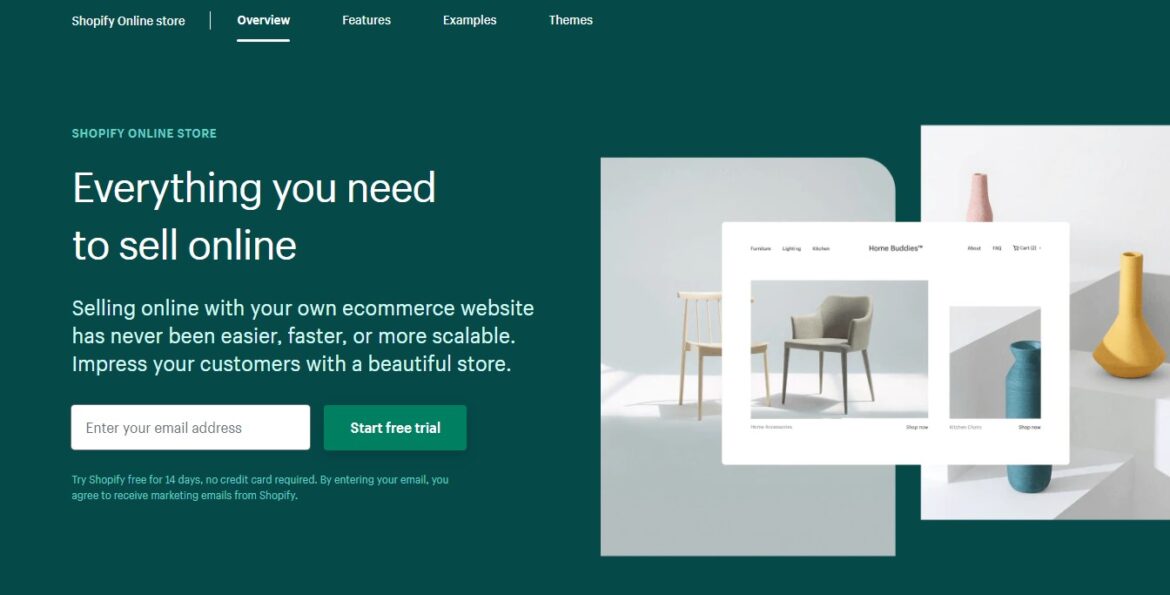
Shopify is a cloud-hosted solution that allows users to create online stores easily. The platform offers themes and templates, inventory management tools, mobile commerce support, SEO tools, and more. Users have complete control over their store’s look and functionality.
BigCommerce
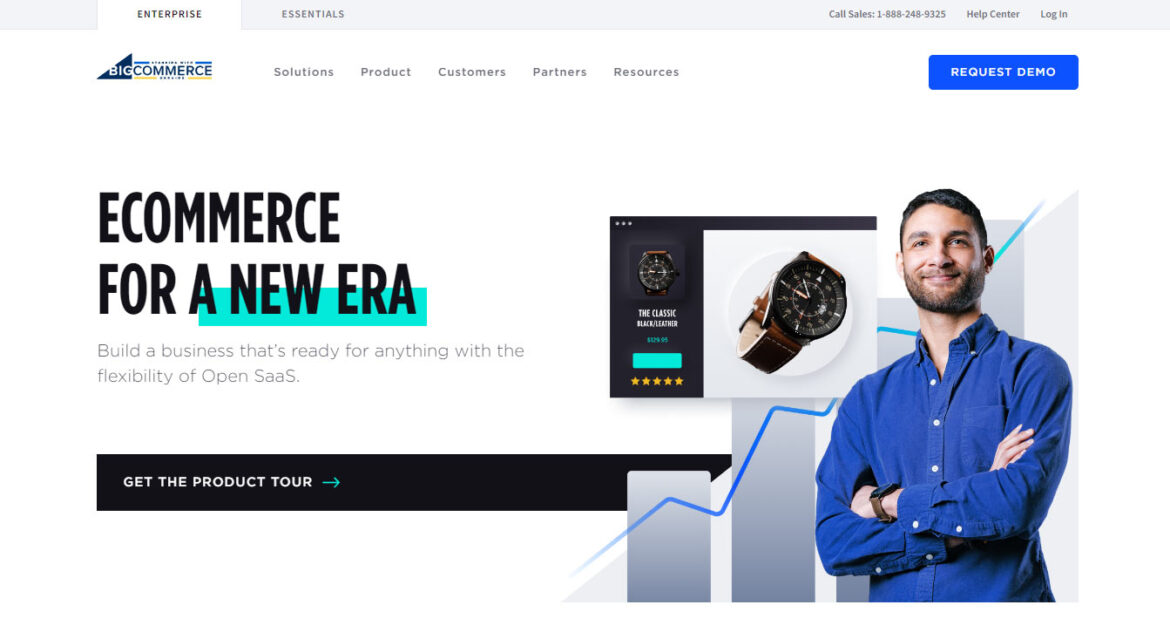
BigCommerce is a cloud-hosting platform that provides everything needed to run an ecommerce business. The platform includes built-in shopping carts, payment gateways, shipping options, SEO tools, analytics, and more. It also comes with a variety of prebuilt solutions and add-ons.
Ecwid
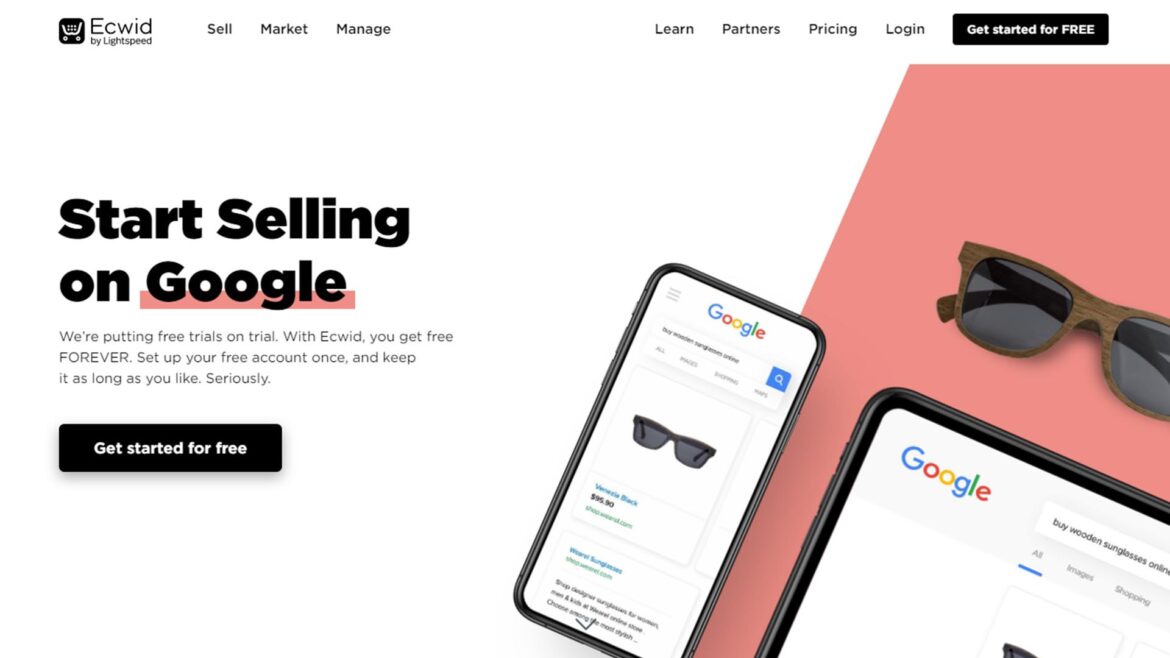
Ecwid is a drag-and-drop interface that makes building an ecommerce website quick and easy. The platform accommodates more than 50 languages. It also offers various integrations, including social media channels, email marketing, and content management systems.
Zyro
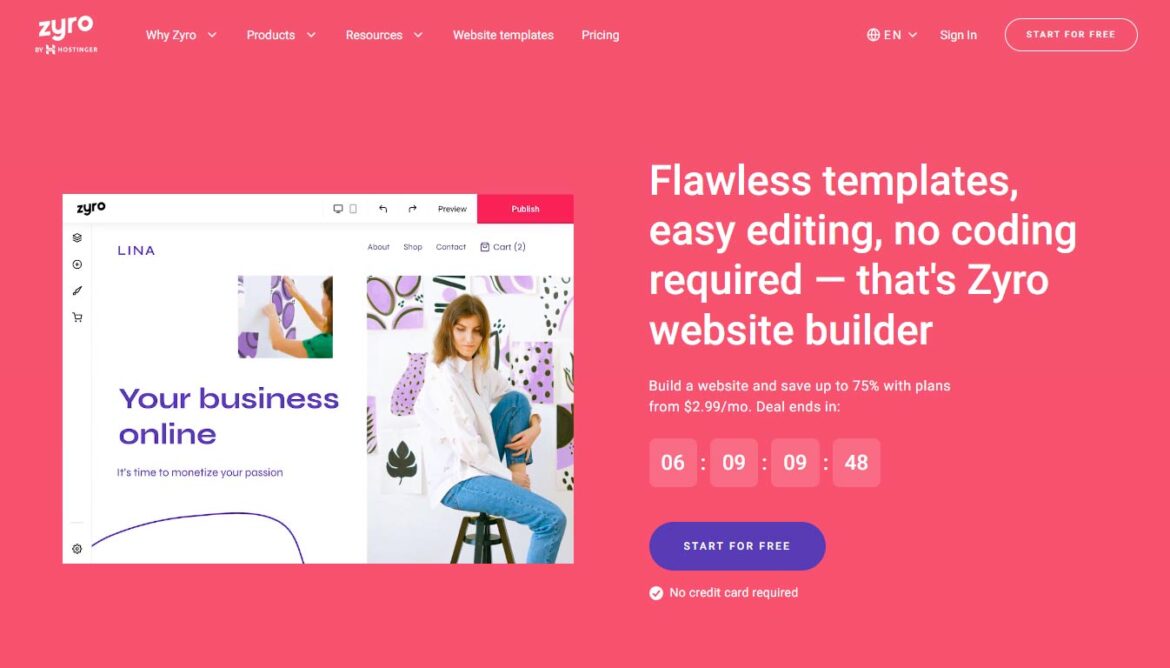
Zyro is a hosted solution that lets users create custom storefronts without worrying about coding. You can quickly launch an online store with no technical skills required. The platform also supports multiple currencies and integrates with Google Analytics.
Zyro is an easy-to-use website builder that lets any beginner create amazing websites and launch online stores that make money. There are no coding skills needed to start.
Weebly
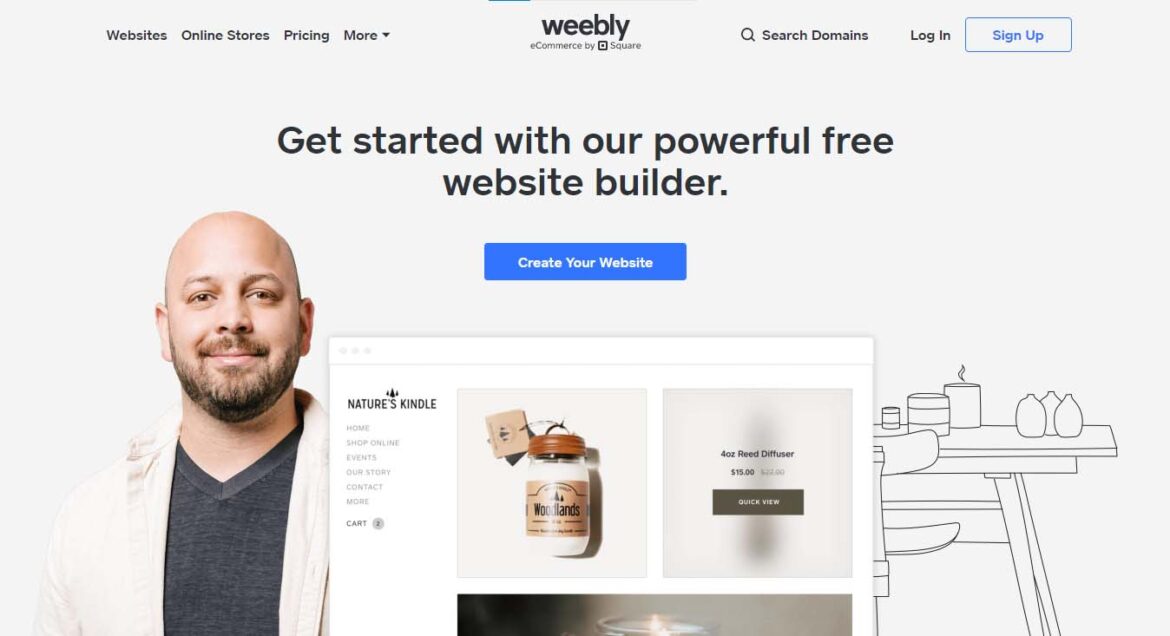
Weebly is another drag-and-drop platform that allows users to design and launch an ecommerce website quickly. The platform offers a variety of prebuilt designs and templates that make creating a new website fast and simple.
As you can see, each platform offers different advantages depending on your needs. While some offer only limited features, others provide extensive customization options. We’ve put together this comparison chart to help you decide which one best suits your needs.
A good site makes it easier for visitors to navigate the website, find what they are looking for, and buy without having to go anywhere else. A great website will increase your conversion rates and keep your users coming back for more.
The 20 Benefits of Ecommerce (Why Ecommerce is Important)
The most obvious benefit of running an ecommerce website is generating revenue. However, several other reasons you should consider starting an online shop. Here are a few of them:
1. Availability.
With the rise of smartphones and tablets, people can browse products from anywhere at any time. This kind of access means that they don’t necessarily need to visit physical stores anymore. By opening an ecommerce website, you’ll be able to reach customers who would otherwise never find you.
2. Speed Access.
Online shopping gives consumers instant access to what they want. They can order items as soon as they arrive in their inboxes. In addition, they won’t have to wait for delivery since all orders are shipped directly to their homes.
3. Customization.
You can customize your site’s appearance by choosing from hundreds of pre-designed templates. The designs will give your visitors a consistent experience across every page.
4. Search Engine Optimization (SEO).
Since search engines like Google and Bing rank websites based on their relevance to keywords, having an ecommerce website will improve your chances of ranking higher in organic searches.
5. Wide Availability.
If you sell products or services worldwide, going global is easier when you’re selling through an ecommerce website. There are no language barriers; all you need to do is upload your products to the marketplace and start selling!
6. Customer Service.
An ecommerce website allows you to interact with your customers on a personal level. For example, if someone finds a problem with an item, you can quickly address it. This way, you can avoid complaints and bad reviews.
7. Low Cost.
Setting up an ecommerce website doesn’t require much investment. Even if you opt for a free plan, you still get complete control over your store. -commerce companies often avoid the costs of running brick-and-mortar stores, like rent, inventory and cashiering. Instead, they rely on third-party providers to handle these tasks. These service providers typically charge lower fees than traditional retailers.
8. Easy integration.
Integrating your ecommerce website with other platforms such as Facebook and Instagram is easy. You need to install a plugin and connect your accounts.
9. Ease of Use.
Customers browsing an online store can quickly locate products using the website’s navigation bar. They can also sort through products by price or popularity. Online retailers can offer international shipping options, making it easier for customers around the globe to shop.
10. Brand Awareness.
Having an ecommerce website lets you build brand recognition. It allows you to reach more people than just those who are physically present in your store. More leads help increase sales because potential buyers know exactly where to look for your product.
11. Flexibility.
Ecommerce websites allow you to change prices and promotions anytime without needing approval from a manager. You can even set up automatic discounts for repeat purchases.
12. Security.
The internet has made it possible for anyone to view your private information. However, this isn’t a concern when operating an ecommerce website. Your data remains secure since it’s only accessible to you.
13. No Inventory.
Inventory management is one of the most tedious tasks for brick-and-mortar. It involves keeping track of how many units each shelf holds, ensuring that items don’t go missing and that there are enough supplies on hand. With an ecommerce website, you don’t have to worry about any of those issues.
14. No Employees.
Running an ecommerce website does not involve hiring staff members. Having fewer staff needs means you’ll save money on payroll taxes and benefits.
15. Time-saving.
Since you don’t have to manage physical locations, you can focus more on growing your business instead of managing employees and inventory.
16. No physical Location.
A brick-and-mortar store requires space, which limits its availability. If you want to open a second location, you’ll have to invest in renting another building. Not so with an ecommerce website. You can sell anywhere, at any time.
17. Better Customer Experience.
When people visit an ecommerce website, they expect to find what they’re looking for quickly. If they do find something, they want to be able to buy it immediately. Brick-and-mortars often take days or weeks to fulfill orders.
18. Lower Risk.
As previously mentioned, brick-and-mortar are risky investments. For example, you could lose all of your inventory if your store goes out of business. An ecommerce website eliminates this risk since everything is stored online.
19. Easier Marketing.
One of the most significant advantages of having an ecommerce website is being able to market your business effectively. You can create special offers, send emails, and make social media posts to attract new customers.
20. Easy Payments.
Many businesses accept credit cards as payment methods. However, some prefer to charge customers via check or cash. Either way, you can still receive these forms of payment online.
What Is an Ecommerce Website?
Ecommerce is the buying and selling goods and services over an electronic network, usually the internet. Ecommerce sites allow customers to purchase items directly from the seller using credit cards, debit cards, or other forms of payment. Many companies offer free shipping options, allowing buyers to receive their purchases quickly and easily. Some sites also provide customer service, allowing buyers to contact sellers if there are problems with orders.
These ecommerce websites range from simple ones selling an item or two to complex ones that sell thousands of things at once. There are many different ways to create an ecommerce site, including a shopping cart system, a marketplace, or even a digital storefront.
Ecommerce sites come in all shapes and sizes, and many different types of ecommerce businesses exist. Some of the most common types of ecommerce websites include:
- Shopping Cart System – A shopping cart is a software application that allows customers to purchase products online. Customers add items to their cart and complete their purchases when they reach the checkout page. Many shopping carts also offer features like gift wrapping and free shipping.
- Marketplace – An ecommerce marketplace is similar to a traditional auction site. Sellers list items on the platform, and buyers bid on those listings. The transaction takes place when the seller accepts a buyer’s bid, and both parties receive payment.
- Digital Store Front – A digital storefront is a storefront that looks just like a typical brick-and-mortar store. It’s usually built into a website and includes product images, descriptions, prices, reviews, and ratings.
- Online Shop – An online shop is a collection of products sold through one single website. The products may be grouped based on category, brand, etc. You can arrange them by popularity, price, or other criteria.
Shopify is an excellent platform for building an e-commerce website. It has a drag-and-drop interface which makes constructing your online store a breeze.
Shopify is easy to use and lets you choose between multiple themes to customize your store. You can easily integrate with popular apps such as Facebook, Instagram, Twitter, Google Analytics, Mailchimp, and PayPal.
How to Start an Ecommerce Business
Starting an ecommerce store requires you to think about many different aspects of running a successful business. One thing to consider is choosing a profitable product. You need to choose something that will sell well and can be sourced efficiently.
If you’re unsure what products to focus on, start with something you already know. When conducting thorough research on your competitors’ prices and sales. Once you’ve found out what works best, you’ll be ready to launch!
As an ecommerce site grows, it becomes harder to manage all aspects of its operations. You must focus on increasing sales while keeping costs down and maintaining customer satisfaction.
To help you achieve this goal, we’ve put together a guide to help you get started. We’ll walk through everything from setting up your website to optimizing your conversion rates.
Setting Up Your Website
1. Research.
Before launching your ecommerce site, you need to understand the industry. What types of products are popular? How much competition is there? Where should you focus your efforts?
2. Choose a platform.
You need to choose a suitable solution before you start selling. You should also consider what kind of website you want to create.
There are several platforms available for creating an ecommerce website. Some cost less than others, but all offer similar features. To choose between them, consider their ease of use, security, design options, and support.
I recommend Ecwid because it’s easy to set up, provides excellent support, and has a low cost of starting up. Try Ecwid.
3. Design.
Once you’ve chosen a platform, it’s time to start designing your website. Consider adding text and images to give visitors a better idea of your product. Make sure your layout is easy to navigate and that every page loads fast. Make sure you keep everything simple.
4. Set Up Shop.
After designing your website, you’ll need to register your domain name and set up hosting services. Hosting will allow you to upload files to your website and host your pages. Registering your domain name ensures that no other company gets hold of it.
5. Add Product and Content.
When you’ve designed your website and registered your domain name, it’s time to add content. Your priority should be filling your homepage with information about your brand and products so that you can move on to listing items for sale.
6. Promote.
The last step before opening your ecommerce business is promoting yourself and your products. Promotion channels you can use include Facebook, Twitter, TikTok and Pinterest. Our ultimate guide to social media marketing is to help you take off.
7. Start Selling.
Finally, you’ll be ready to sell your products once you’ve built up enough traffic.
8. Analyze.
Once you’ve launched your ecommerce business, it’s crucial to analyze how well it’s doing. Use tools such as Google Analytics to see where your loyal customers come from and which products sell best.
9. Grow.
If you do not see good results, keep working on your website until you do. Try different strategies to boost sales, including offering discounts, giving free samples and using coupons.
10. Repeat.
Once you have a successful ecommerce business, you can expand by starting another one. Or, you can continue growing your current one.
Surfer is the Content Intelligence platform that unifies content strategy and creation into one process – to give content teams the tools they need to grow brands, generate organic traffic, and increase revenues.
Future of Ecommerce
According to Emarketer research, worldwide ecommerce will reach $7.385 trillion by 2025 and make up 24.5% of all retail sales. As ecommerce continues to grow, brick-and-mortar retailers will lose market share to online retailers.
However, offline retailers still have many opportunities to thrive in the future. Offline retailers can benefit from the rise of ecommerce by offering unique products and services that products cannot find online. Online retailers must provide amazing products and services to stay competitive.
Ecommerce is evolving rapidly. We’re seeing more and more stores offer virtual try-on shopping experiences. These experiences allow you to try on items at your own pace virtually. As technology advances, we’ll see more ways to shop online. For example, we might soon be able to buy cosmetics using mobile phones.
Key Takeaways
Ecommerce is a great way to earn money online. It’s easy to set up and can provide a steady income if done correctly. However, it takes hard work and dedication to get started. So, don’t give up! or a step-by-step guide, see our ultimate guide to ecommerce.
If starting a website is something you’re considering, then make sure you do your homework first. Make sure you start with a narrow focus so that you have room to expand later. Remember, building a profitable ecommerce site isn’t an overnight success. It takes time and effort.
Here is a list of the best ecommerce software to choose from.
Frequently Asked Questions
What is the Difference Between Ecommerce and an e-Business?
Ecommerce is a subset of e-business. It is the buying and selling of products and services online. An eBusiness includes everything that happens within a company when it goes online. It is the entire process of running your business online.
What is the difference between Ecommerce and e-Business?
Ecommerce is an umbrella term for all types of online transactions. It includes buying and selling goods and services online. It also includes marketing activities, customer service, and other aspects of running an online store.
A company needs many different platforms to operate effectively. Ecommerce businesses need a website, CRM, a digital workplace, and ERP. An e-business also needs marketing tools like social media, SEO, and PPC. company may even need a mobile app to reach customers through its smartphones.
An E-business is a business that sells products or services online. An e-commerce website is a primary interface through which customers interact with a company. E-commerce websites usually offer shopping carts, payment options, shipping options, and customer support. Some companies also sell physical goods via their websites.
What makes an ecommerce store successful?
Ecommerce businesses need to focus on their products, first and foremost, because if you’re not selling what customers want, you won’t succeed. Your brand messaging is crucial because it tells customers why they should buy from you.
Targeting your audience will help you reach the right customers at the right time. And your store’s user experience needs to be simple, intuitive, and easy to navigate. Finally, you’ll want to ensure that your fulfillment process works well and delivers products quickly.
Find what you need to grow better
